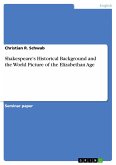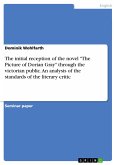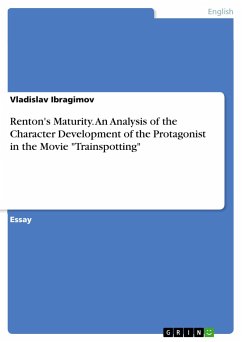Seminar paper from the year 2013 in the subject English Language and Literature Studies - Literature, grade: 1,0, University of Bonn (Anglistik), course: Gothic Fiction, language: English, abstract: 1. IntroductionWe encounter the term Gothic in a lot of domains. In history, the term is to be found referring to the East Germanic tribe called the Goths and in linguistics referring to their extinct language. It also relates to Gothic architecture, prevalent in Western Europe in the 12th to 16th century and its revival from the mid-18th to early 20th century, characterized by pointed arches, rib vaults, flying buttresses, large windows and elaborate tracery. It is also used as a reference to the gloomy and horrifying Dark Ages. Today we have a subculture which refers to oneself as Goths and their style as Gothic. In literature Horace Walpole's The Castle of Otranto from 1764 is assigned as the origin of Gothic in literature. From this time on, Gothic features can be found in many novels by different authors from continental Europe. It continued throughout different literary periods, be it Romanticism or the Victorian Age, and its elements and figures were used in novels, drama, poetry and short stories. Therefore, it is no wonder that its presence continued in the new media of the twentieth century like radio, television and movies. There are movie adaptations of Gothic writings as well as movies influenced by the Gothic and making use of its features.The cult movie The Rocky Horror Picture Show offers grotesque characters: the straps and makeup wearing Dr. Frank N. Furter, a 'sweet transvestite', his sun-tanned, flaxen-haired muscular creation Rocky, wearing golden underpants. A sinister and humped servant called Riff Raff and all the strange-looking people doing the 'Time Warp'. This and an innocent couple's strange adventure in an old and isolated mansion which is the home of the mysterious Dr. Frank N. Furter, tempt the spectator to see a Gothic influence in this musical movie adaptation. Consequently the question arises: Is it there, the Gothic?Andrew Smith, at least, included The Rocky Horror Picture Show in his list of Gothic texts in Gothic Literature but does not justify it. And Jeffrey Cox asserts in English Gothic Theatre that scholars have identified Gothic elements in the movie, but he as well provides no proof nor even names some of these scholars. As studies about Gothic elements in The Rocky Horror Picture Show are missing it would be an interesting undertaking to proof these statements. The aim of this paper is therefore to find out if the Gothic is actually present in The Rocky Horror Picture Show.
Hinweis: Dieser Artikel kann nur an eine deutsche Lieferadresse ausgeliefert werden.
Hinweis: Dieser Artikel kann nur an eine deutsche Lieferadresse ausgeliefert werden.







